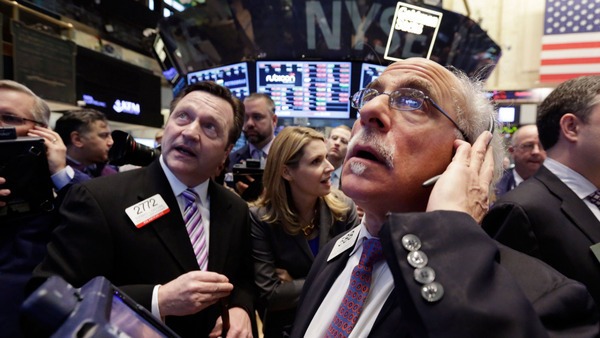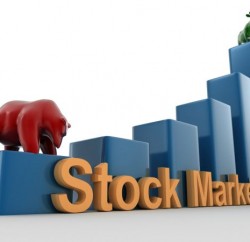On Monday, Bank of America Corp (NYSE:BAC)’s shares inclined 0.93% to $15.70.
Wall Street banks may have finally hit on a way to pinpoint the value of analysts and squeeze more money from their research: Stop making it so easy to share, according to the Bloomberg.
Bank of America Corp. has started embedding analysts’ reports into web pages, so it can more easily restrict access than with PDF files that are widely shared with people who aren’t paying clients, said Candace Browning, the firm’s head of research. It’s joining rivals Morgan Stanley and Citigroup Inc. in limiting access, and more plan to follow. The approach also makes it easier to track analysts’ readership and customize products for specific types of clients, according to bank executives and consultants.
Bloomberg stated Banks and brokerages will spend $3.4 billion on their research analysts around the world in 2017, down by more than half from $8.2 billion in 2008, according to Neil Scarth, a principal at Frost Consulting in London. That doesn’t comprise costs for technology, sales and other methods of distribution.
Bank of America has been tracking clients’ habits for years through e-mails and a website where customers can see and download reports. But it doesn’t know what happens after they save them. Under the new system, clients must access a site to view material that stays there, much as they would peruse a favorite newspaper behind a paywall, according to Daire Browne, Bank of America’s chief operating officer for global research. The pages are more dynamic than a PDF and will have more security, making them harder to recirculate, he said.
Bank of America Corporation is a bank holding company. The company, through its auxiliaries, operates through Consumer and Business Banking; Consumer Real Estate Services; Global Wealth and Investment Administration; Global Banking; Global Markets; and Other segments.
Itau Unibanco Holding SA (ADR) (NYSE:ITUB)’s shares dropped -2.30% to $6.79 as the real nears its weakest point ever and Brazil faces economic and political troubles.
The real fell to 3.985 per U.S. dollar in early trading recently, which is its weakest intraday level since October 2002 and short of the all-time intraday low of 4.014, Reuters reports.
The higher the real is relative to the dollar, the weaker the currency. The real has not closed at or beyond four per dollar since its introduction in 1994, Reuters notes.
Brazil’s central bank said it would sell up to $3 billion on the currency spot market with repurchase agreements at two auctions on Monday in an attempt to support its currency, according to Reuters.
Itaú Unibanco Holding S.A. provides various financial products and services to individuals and corporate clients in Brazil and internationally. The company operates through Commercial Bank Retail, Consumer Credit Retail, and Wholesale Bank segments.
At the end of Monday’s trade, Banco Bradesco SA (ADR) (NYSE:BBD)‘s shares dipped -2.91% to $5.68 as the Brazilian real continues to decline.
The South American country’s currency has weakened past 3.98 to the dollar for the first time in 13 years, The Wall Street Journal reports. On Friday, the real exited active trading at 3.9480, its second lowest close ever.
Banco Bradesco is a Sao Paulo-based commercial bank that offers a wide variety of financial products and services to customers in Brazil.
The real has been declining as Brazil’s economy shrinks, due to political issues and as a result of the country’s investment grade credit rating being cut by Standard & Poor’s, the Journal noted.
Banco Bradesco S.A. provides banking and financial products and services to individuals, companies, and corporations and institutions. The company operates through two segments, Banking; and Insurance, Pension Plans and Capitalization Bond. It accepts various deposit products, such as demand deposits, time deposits, checking accounts, savings accounts, interbank deposits from financial institutions, and accounts for salary purposes.
AES Corp (NYSE:AES), ended its Monday’s trading session with -1.46% loss, and closed at $10.78.
AES Distributed Energy, formed through the acquisition of Main Street Power in March, filed documents for a new solar ABS deal on Monday with the Securities and Exchange Commission, according to the Reuters.
When it hits the market, the ABS, being issued through a platform called Aurora Master Funding, would be the first deal backed by solar assets to be sponsored by an utility company.
ABS issuers must file an ABS-15G form with the SEC at least five business days before bringing a transaction to market.
The collateral portfolio comprises equipment leases and power purchase agreements regarding 43 megawatts of solar assets owned through 15 different project companies. Most are municipal and commercial assets but some are residential.
Morgan Stanley, which finances AES Distributed Energy through its MS Solar Solutions partner, is underwriting the ABS.
The deal could assist broaden the appeal of the nascent solar ABS asset class, which participants say has been held back by in comprising structures that make investment challenging.
Solar power is growing fast in the US - the number of houses with rooftop solar grew 70% year on year in the second quarter of 2014, according to a recent study - and many developers view securitization as a key part of their funding strategy. Reuters Reports
The AES Corporation operates as a diversified power generation and utility company. It owns and/or operates power plants to generate and sell power to customers, such as utilities, industrial users, and other intermediaries.
DISCLAIMER:
This article is published by www.wsnewspublishers.com. The Content included in this article is just for informational purposes only. All information used in this article is believed to be from reliable sources, but we make no representations or warranties of any kind, express or implied, about the completeness, accuracy, or reliability with respect to this article.
All visitors are advised to conduct their own independent research into individual stocks before making a purchase decision.
Information contained in this article contains forward-looking information within the meaning of Section 27A of the Securities Act of 1933 and Section 21E of the Securities Exchange Act of 1934, counting statements regarding the predictable continual growth of the market for the corporation’s products, the corporation’s ability to fund its capital requirement in the near term and in the long term; pricing pressures; etc.
Any statements that express or involve discussions with respect to predictions, expectations, beliefs, plans, projections, objectives, aims, assumptions, or future events or performance may be forward looking statements. Forward-looking statements are based on expectations, estimates, and projections at the time the statements are made that involve a number of risks and uncertainties which could cause actual results or events to differ materially from those presently anticipated. Forward looking statements may be identified through the use of such words as expects, will, anticipates, estimates, believes, or by statements indicating certain actions may, could, should might occur.



